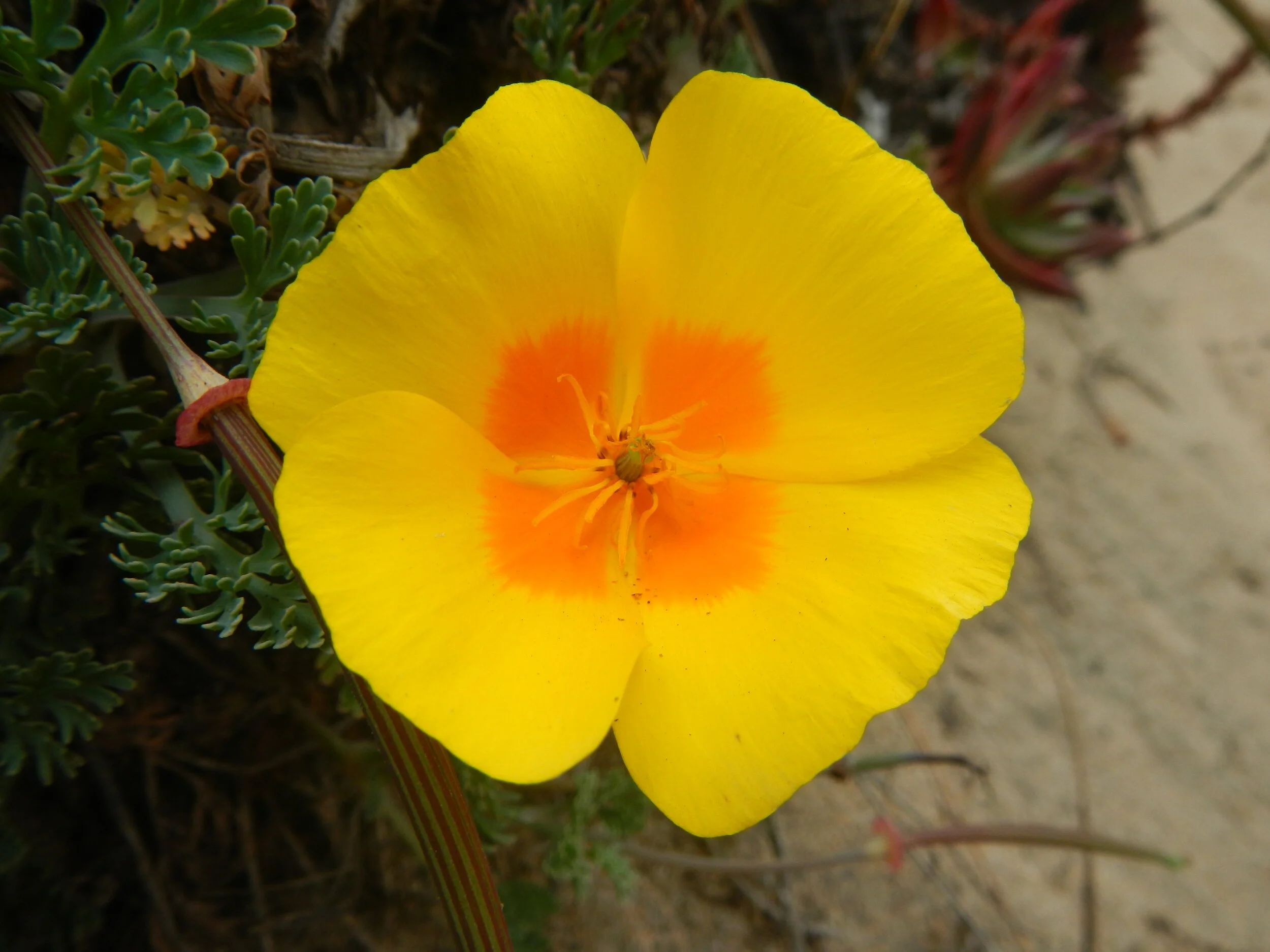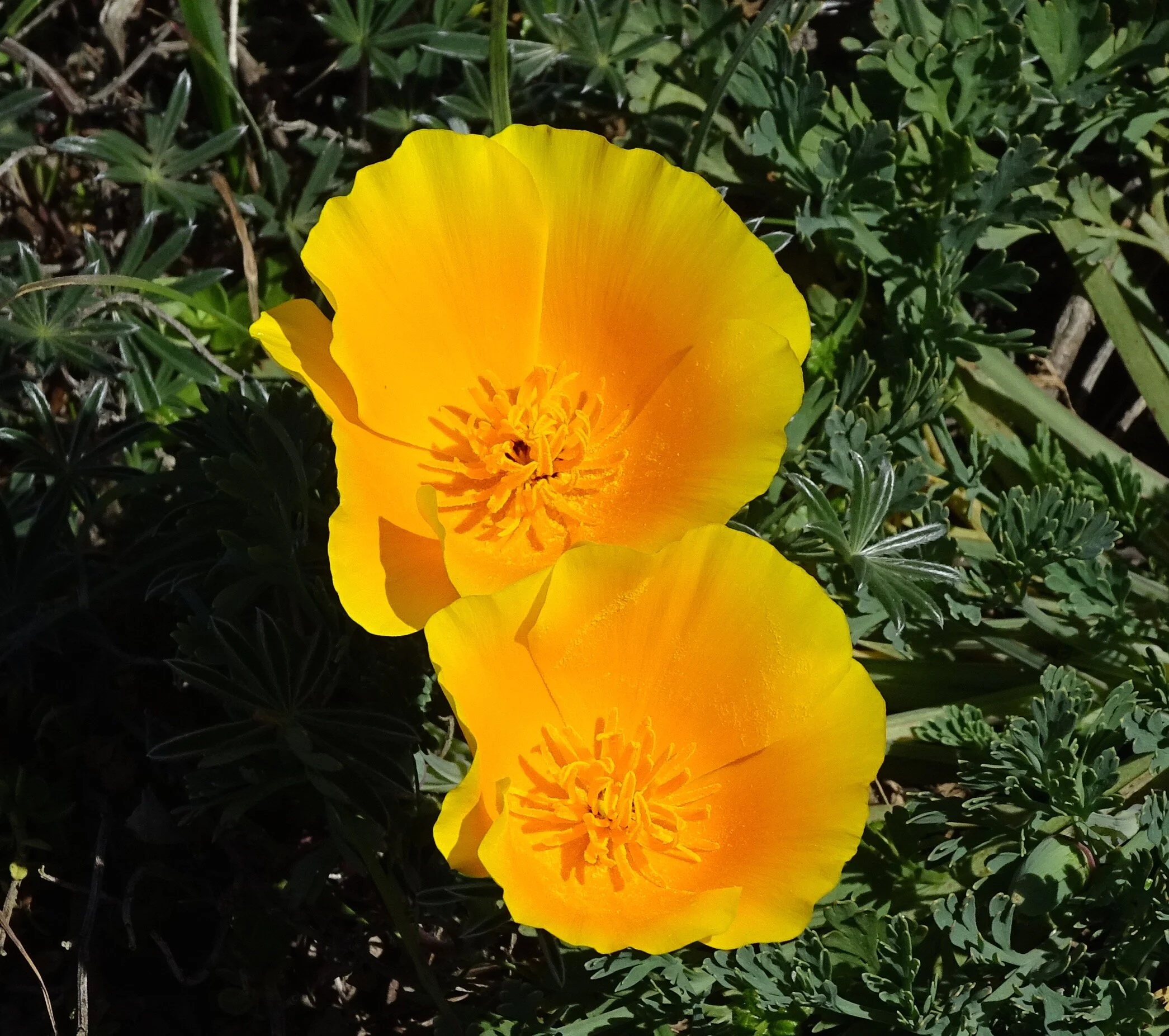Happy spring from the Coastside Land Trust. It is that time of year when the fields start to burst with color, and the California poppy, Eschscholzia californica, is especially striking. These conspicuous flowers can be bright orange, yellow, or (as is found in the local, coastal Eschscholzia californica var. maritima) dark orange in the center with yellow lobed petals. Early Spaniards in California called poppies “Dormidera” (to fall asleep) because the flowers open up in the sunshine, but close up again in the evening, and on foggy or cloudy days.
The California Poppy is native to California, but can also be found elsewhere. It is our state flower (designated in 1903), and blooms from February through September in a variety of different plant communities. In some places it is an annual plant, but in Half Moon Bay it behaves like a herbaceous perennial (a plant that can live for a number of years, dying down after fruiting, and reemerging from the same root system).
California poppies do not produce nectar, but instead produce a large amount of pollen. They are pollinator generalists, attractive to a large number of different pollinating insects. To help increase their visibility to these pollinators, California poppy flowers have a large central spot that absorbs ultra-violet radiation while reflecting the longer wavelengths. Ultraviolet light is not visible to humans. Insects, however, can see the UV pattern, which appears as a dark spot in the center of the flower that contrasts sharply with the UV-reflecting petal around it, guiding the insect to the pollen.
Thank you to Toni Corelli for these beautiful, local photographs.


